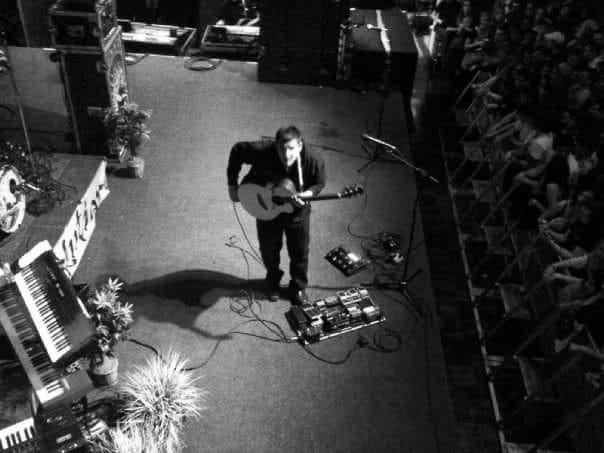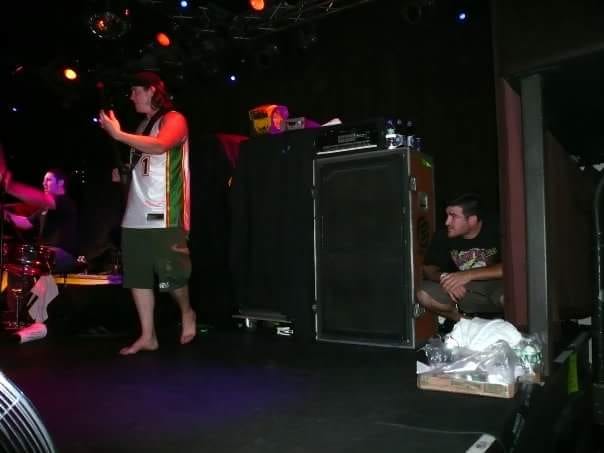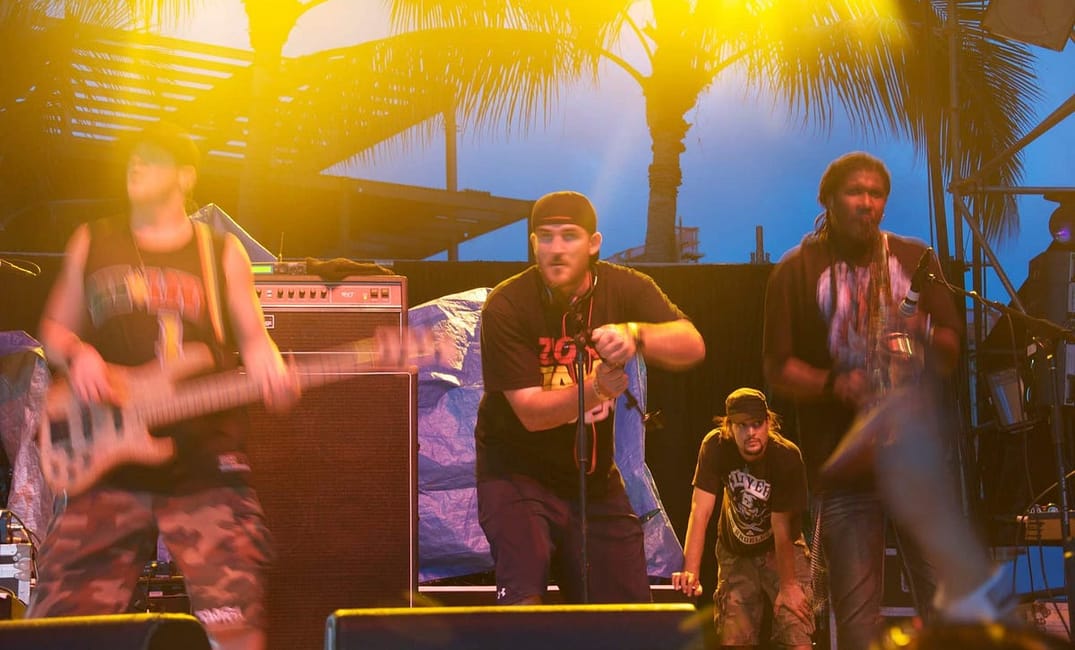
Anybody who’s gone to a concert has felt it, whether it was at a festival rife with the top acts in the world or a show at the Fillmore, headlined by your favorite indie band.
The supporting band has just finished their set, leaving you and your crew glowing and feeling properly primed for the expected epicness of the main act’s performance. Floating comfortably in the lull preceding the headliner, you and some of your friends take the opportunity to scurry off to gather drinks and hit the restroom, while the bigger bladdered of your cohorts hold your spot in the crowd.
Sometime later, after frantically navigating through a group of drunken bros in tank tops, you make it back to your crew and get settled just in time for the main event. The house lights fall, and smoke begins to rise from the stage. Naturally, the crowd perks up, a palpable buzz rising. The buzz morphs into a rumble as the shadowed figures of your favorite band start to make their way onto the stage. There is a brief pause…and then it happens: the crowd is hit with a wash of light and a wall of sound; the rumble transforms into a roar; and the vibes are upon you. The phenomenon that is large-group, collective-vibe reciprocation is hard to put into words, but it is real and magnificent.
But how are those vibes manifested? How do the rays of light and the wall of sound come to be? How does it all come together?
For four years, I was the tour manager of Rebelution, one of the biggest independent bands in the country. In that role, I was the one in charge of this: bringing it all together, creating the show and manifesting the vibes.

One may not take note of the humanoids silently scuttling about the stage during concerts, all clad in black, attending to faulty cables and defective pedal boards — but that is a good thing. Crew members (roadies) are not supposed to be noticed. They are the silent few who are responsible for the sonic revelry of many. While their duties remain a mystery to most, make no mistake—they are the gears, pistons and shocks of the machine that is a touring band.
There is the captain of the ship, the tour manager; they are the CEO of the tour, responsible for everything, including but not limited to travel logistics, lodging, production schedules, venue/promoter interactions, payroll, morale boosting and life coaching. Their main goal is to make sure the band and crew members have everything they need and most of the stuff they want. (This was me.)
When it comes to the onstage crew, there are five main members: the sound engineer, the monitor engineer, the stage manager, the lighting designer (LD) and the guitar technician (tech).
The sound engineer is responsible for the sound heard by the crowd, and having a good one is exceedingly important. A poor job by the sound guy can result in a perfectly played show coming across like a few hacks in a garage.
Monitor engineers are responsible for the sound the band hears. Most bands use devices called in-ear monitors, which are essentially fancy (and expensive) headphones; they are customized by technicians who pour foam into your ear, allow the foam to dry and then use the shape of the inside of your ears to keep them in place. Each band member has a different mix of sounds they prefer, and the preference will vary depending on which instrument they play and whether or not they sing lead or backup vocals. Musicians are famously picky about what’s going into their ears, so you are either on your game or on a one-way flight back home.
Sometimes you have an official stage manager, but oftentimes the monitor engineer or guitar tech will double as the stage manager. Their babies are the stage plot (dictates design and destination for every piece of equipment) and everything else occupying the stage. Ultimately, they make sure everything and everyone works together, and in a timely fashion.

Guitar technicians are a special breed. One can count on a few things from a great guitar tech: 1) they can shred; and 2) they are scholars who like to nerd out on all things guitar. Their duties include stringing, tuning and repairing the guitars, pedal boards, amps, cabs and cables. If you look closely, you will notice the techs sneaking onstage between songs and swapping guitars for the players, like musical ninjas.
Last but not least is the lighting designer (LD). They are often technical visionaries whose attention to detail and flare for the dramatic can lead to a greatly enhanced crowd experience. An LD handles the installation, maintenance and functionality of the lighting rigs and smoke machines (while smoke machines look cool as an effect, they serve the greater purpose of helping the lights “pop”). They are called “designers” because they are constantly developing new looks, color schemes and queues to be used during the set.
There are other crew members, such as the merchandise manager, bus drivers, photographers and security, who all play their role and are of equal importance.
The best way to encapsulate the combined efforts of the crew is the phrase “Build it up to break it down.”
Here is an example of a day in the life of a touring crew member:
Unload and unpack the 100+ cases in the trailer; roll in the risers; build the drum kit; put together the keyboard stands; build the guitar world; place the amps, cabs and pedal boards; install the sound and monitor boards; wire all the instruments and microphones to run to said boards; install and adjust the lighting rig; place the props and hang the banners; restring the guitars; stretch the strings (and retune them repeatedly until they maintain their tonal integrity); perform a line check (testing of all the equipment, ensuring that everything is in working order, which it most likely isn’t); troubleshoot and rectify the maleficence of the malfunctioning pieces of equipment; place water bottles and hand towels at each band member’s disposal; and then call the band for the sound check. It’s a lot.
With the stage built and the band summoned, the sound check commences. This is when the in-ear monitors get dialed in and the lighting is adjusted to the room. Meanwhile the sound engineer EQs and adjusts the levels, adapting to the geometry of the venue. The band may work on a new song intro or a freshly created transition between two songs. If they are in writing mode, they may practice a new tune. While the band gets locked in, the crew is hard at work further honing in the crispness of their respective areas of responsibilities, all while darting around to each band member to ensure that things are just so.
Once the doors open to the public, the crew will get a brief moment to decompress and eat before returning to the stage to prepare for the actual performance.
About 30 minutes before the headliner hits the stage, the guitar tech tunes all guitars again, makes sure the wireless packs are fully charged and functioning and on a clear channel. Once the opening acts have finished, they will place all the pedal boards in their marked location and complete another line check to ensure that all the channels are working properly.
At the same time, the monitor engineer makes sure the in-ear packs are fully charged, functioning and on a clear channel. Once satisfied, they will bring the in-ear monitors to the band members.
The stage manager will assist the guitar tech with the line check and double-check that every water bottle, beer cup and towel is in its proper place. Next, they will work in tandem with the sound engineer to make sure everything is in working order before informing the tour manager that the stage is set and good to go.
The tour manager will gather the band members and walk them to the stage. Once everything is confirmed to be in working order, he will radio to the front of the house to lower the house lights and let the show begin.
And so the vibes are delivered.
The crowd sees, hears and consumes the music, along with the beers, joints and glorious vibes.

Simultaneously, the crew sees, hears and attends to squeaky microphones, broken cymbals, malfunctioning wah pedals, snapped guitar strings, radio static, etc.
And then the show ends, and the vibes — well, they have been properly delivered.
Once the crowd — tired yet euphoric, slightly drunk if not a bit stoned — is herded out of the venue, the band’s crew, along with the house crew, break down everything they built up, pack it back into the cases and load it back into the trailer. Upon completion, it’s time to get back on the bus and head to the next city, in the next state, at the next venue and do it all over again, six nights a week for two months straight.
So the next time you find yourself caught up in the vibes, take a look and see if you can spot one of the silent few who are responsible for the sonic revelry of many. You can spot them by their all-black attire and ability to remain in the shadows between rays of light and walls of sound.







